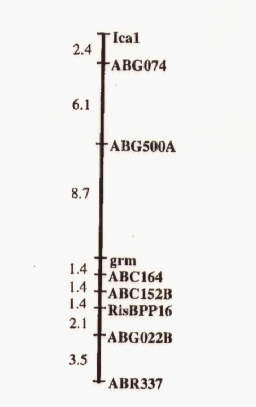
Fig. 1. Position of gramine on chromosome 5
in the Steptoe/Morex cross (scale in cM).
Reference:
H. Yoshida, T. Iida, K. Sato, S. Moharramipour* and H. Tsumuki
Research Institute for Bioresources, Okayama University, Kurashiki, 710,
Japan.
*Present address: Department of Entomology, Faculty of Agriculture, Tarbiat
Modarres University, Tehran, Iran.
Gramine, 3-(dimethylaminomethyl) indole, found in Hordeum and Phalaris has various biological activities including toxicity to mammals, insects, plants, bacteria and fungi (Corcuera, 1993). Gramine is located mainly in parenchymal cells and on the leaf surface in barley (Yoshida et al., 1993). Correlation between gramine content and aphid resistance in barley lines have been found in the field experiments (Kanehisa et al., 1990). Gramine contained in artificial diets decreased fecundity and longevity of Schizaphis graminum (Kawada and Lohar, 1989). These observations suggest gramine may be one of the resistance factors against cereal aphids. The synthetic pathway of gramine is considered as follows (Leland et al., 1985). 3-Aminomethylindole (AMI) is synthesized from tryptophan through unknown metabolic steps. AMI is catalyzed into N-methyl-3-aminomethylindole (MAMI) by N-methyltransferase (NMT). The NMT also converts MAMI into gramine.
Since Morex is a NMT-deficient mutant (Leland et al., 1985), it is a good material for genetical analysis of synthetic pathway of gramine. In this study, we measured gramine content of seedlings in 150 doubled haploid (DH) lines derived from the cross between Steptoe and Morex developed by North American Barley Genome Mapping Project (NABGMP) (Kleinhofs et al., 1993) and mapped genes for gramine synthesis to make clear the relation between gramine and aphid resistance. Gramine content was measured in one-week-old seedlings as described by Yoshida et al. (1993). Linkage analysis was performed by use of MAPMAKER/EXP 3.0 (Lincoln et al., 1992) with 434 marker data sets provided by NABGMP.
Gramine content in the seedlings of the parental lines, Steptoe and Morex, was 367 ug/g fresh weight and trace amount, respectively. Gramine content of 150 DH lines showed a bimodal distribution. Lines that have more than 50 ug gramine /g fresh weight were determined as "Steptoe-type" and much lower than that were determined as "Morex-type". The segregation was fit to the ratio of 1:1 by Chi-square test, indicating that deficiency of gramine in Morex is controlled by a single locus as suggested by Leland et al. (1985).
The gramine synthesis gene was detected on the centromere region of chromosome 5 linked with marker genes ABG500A and ABC164 (Fig. 1). The locus controlling gramine synthesis was named tentatively as grm. Aphid resistance QTL detected on chromosome 1, 2 and 5 in the Harrington/TR306 and Steptoe/Morex crosses (Moharramipour et al., 1997a and 1997b) did not linked with grm.

Fig. 1. Position of gramine on chromosome 5
in the Steptoe/Morex cross (scale in cM).
Reference:
Corcuera, L. J. (1993) Biochemical basis of the resistance of the barley to aphids. Phytochemistry 33: 741-747.
Kanehisa, K., H. Tsumuki, ,K. Kawada and M. A. Rustamani (1990) Relations of gramine contents and aphid populations on barley lines. Appl. Entomol. Zool. 25: 251-259.
Kawada, K. and M. K. Lohar (1989) Effect of gramine on the fecundity, longevity and probing behavior of the greenbug, Schizaphis graminum (Rondani). Ber. Ohara Inst. Landwirt. Biol. Okayama Univ. 19: 199-204.
Kleinhofs, A., A. Kilian, M. A. Saghai Maroof, R. M. Biyashev, P. Hayes, F. Q. Chen, N. Lapitan, A. Fenwick, T. K. Blake, V. Kanazin, E. Ananiev, L. Dahleen, D. Kudrna, J. Bollinger, S. J. Knapp, B. Liu, M. Sorrells, M. Heun, ,J. D. Franckowiak, D. Hoffman, R. Skadsen and B. J. Steffenson (1993) A molecular, isozyme and morphological map of the barley (Hordeum vulgare) genome. Theor. Appl. Genet. 86: 705-712
Leland, T. J., R. Grumet and, A. D. Hanson (1985) Biochemical, immunological and genetic characterization of natural gramine-free variants of Hordeum vulgare L. Plant Sci. 42: 77-82.
Lincoln, S., M. Daly and E. Lander (1992) Constructing genetic maps with MAPMAKER/EXP 3.0. Whitehead Institute Press, Cambridge, MA, USA. Technical Report, 3rd ed.
Moharramipour, S., H. Tsumuki, K. Sato and H. Yoshida (1997a) Mapping resistance to cereal aphids in barley. Theor. Appl. Genet. (in press)
Moharramipour, S., H. Yoshida, K. Sato, T. Iida and H. Tsumuki (1997b) Mapping genes for resistance to cereal aphids in Steptoe/Morex. Barley genet. newsl. (submitted).
Yoshida, H., H. Tsumuki, K. Kanehisa and L. J. Corcuera (1993) Release of gramine from barley leaf surface. Phytochemistry 34: 1011-1013.